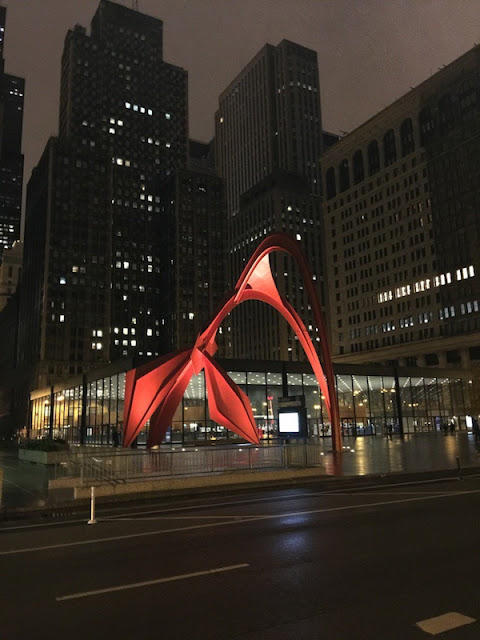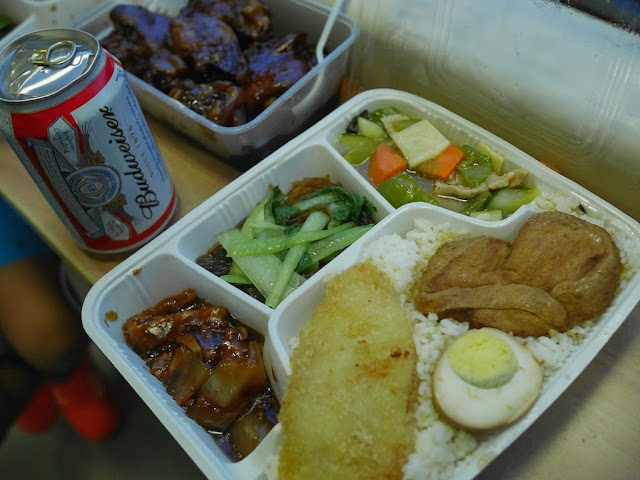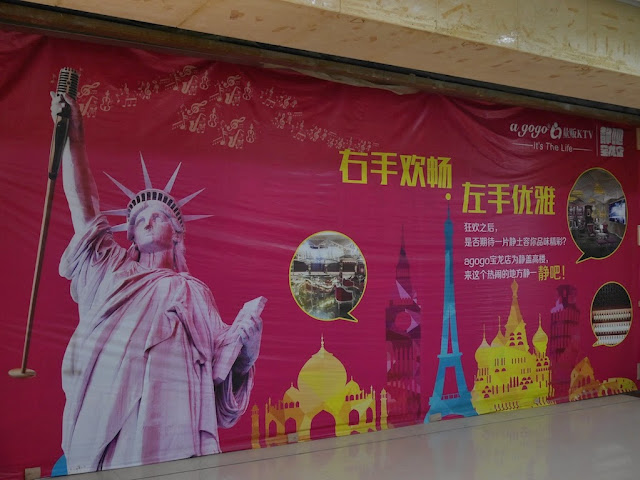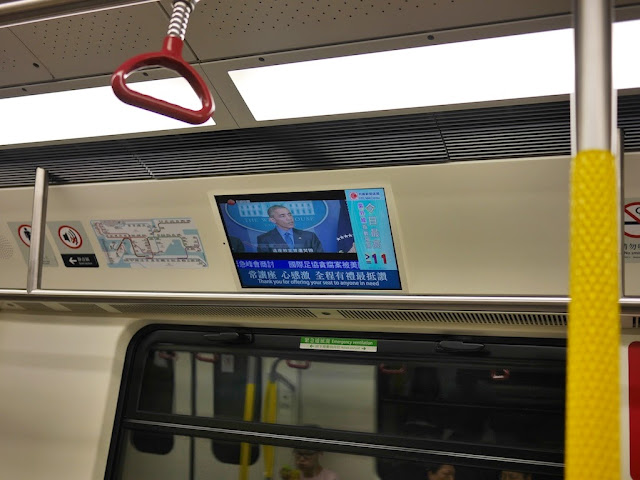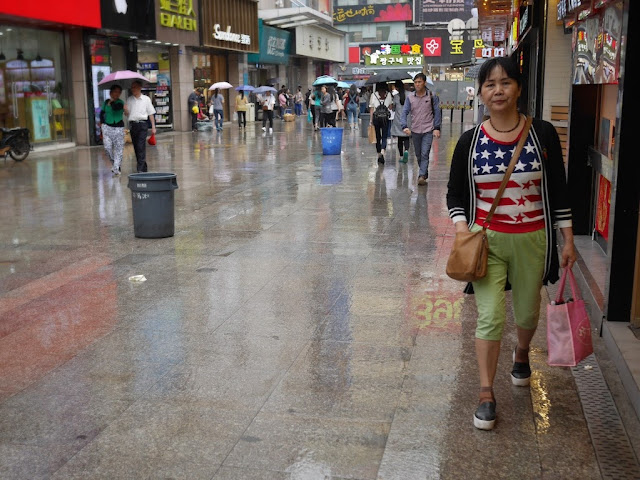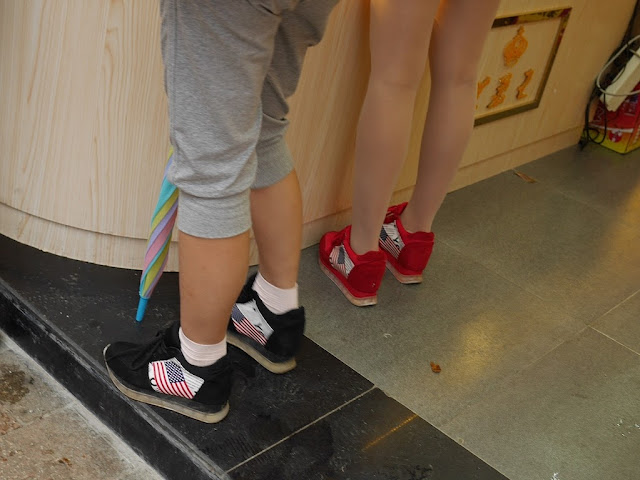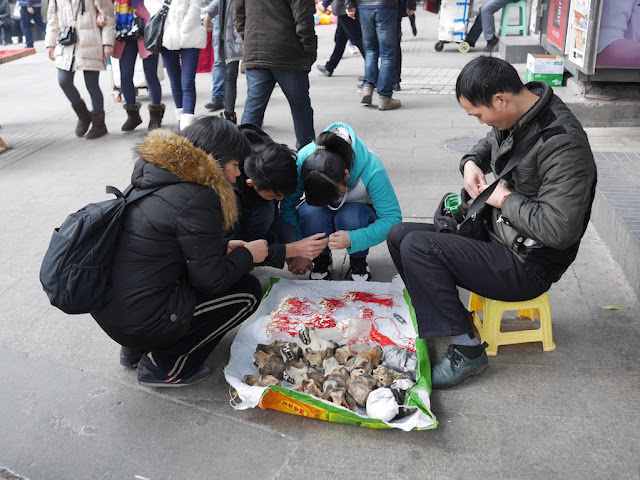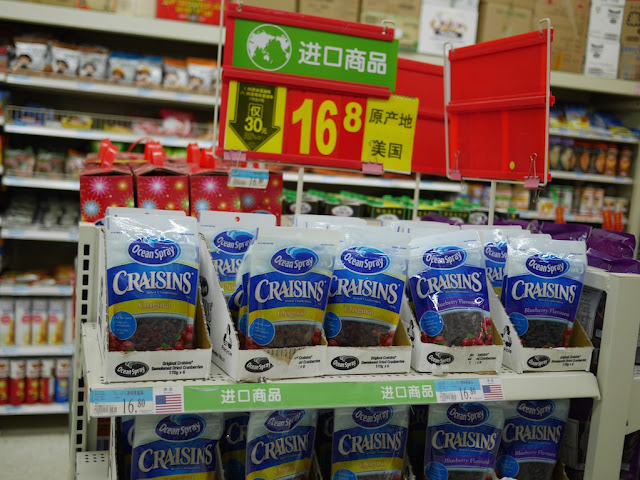Dali L. Yang, Professor in the Department of Political Science at the University of Chicago, recently tweeted a photo of a sculpture by the American artist
Alexander Calder (1898-1976).
The Chicago Public Art Program's
description of the "Flamingo" emphasizes how the sculpture fits in with its surrounding environment and offers an immersive experience:
Alexander Calder’s abstract stabile anchors the large rectangular plaza bordered by three Bauhaus style federal buildings designed by Mies van der Rohe. The sculpture’s vivid color and curvilinear form contrast dramatically with the angular steel and glass surroundings. However, Flamingo is constructed from similar materials and shares certain design principles with the architecture, thereby achieving successful integration within the plaza. Despite its monumental proportions, the open design allows the viewer to walk under and through the sculpture, leading one to perceive it in relation to human scale.
Seven years ago, David Mendell for the Chicago Tribune shared how the cost for a needed renovation at the time may have been
justifiable simply in terms of attracting tourists:
Art lovers and conservationists maintain the expenditures are essential, and economical, if Chicago is to continue drawing tourists who want to view public art.
"These works really show the commitment Chicago has to promoting (the city's) cultural landscape in the last half of the 20th Century," said Victor Simmons, director of education for the Chicago Architecture Foundation. "It would be a great loss if those two contemporary works were allowed to disappear."
Fortunately, Calder's work didn't disappear. Two months ago, I felt inspired to take a photo similar to Yang's:
Perhaps too similar. Unfortunately, I haven't been to Chicago in years. Instead, I took the photo in China — more specifically, at the Huafa Mall in Zhuhai, Guangdong.
No Bauhaus-style federal buildings border the mall's plaza, and some differences exist between the Zhuhai sculpture and Calder's. But it is hard to believe the striking resemblance is a coincidence, and the Calder Foundation makes
no mention of this work.
 |
| Photo by Min Lee of Calder's "Flamingo" in Chicago taken from a more a easily comparable viewpoint |
There have been times when an example of "China copied!", often a justifiable claim, struck me as being no more a copy than examples in the West which were not similarly called out. Many of the most celebrated artists have used others' ideas and material to one degree or another. The line between imitation and similar-in-style can be fuzzy. Some of Calder's own works made me immediately think of earlier artists. And the more I compared photos of the sculptures in Zhuhai and Chicago the more differences I noticed. Revisiting both in person may uncover more.
Nonetheless, I strongly lean towards calling the Zhuhai sculpture an imitation. At best, it seems to be rather near that fuzzy boundary. It would be interesting to know whether the differences are primarily a result of artistic considerations, a desire to technically avoid the "copy" label, or failing to perfectly copy Calder's sculpture.
Whatever the artistic, ethical, and legal issues, though, there is a positive side to apparent imitations like the one in Zhuhai. For example, relatively few people in Zhuhai will ever have the opportunity to visit Chicago or support its tourism industry. At least they can now better experience something similar to its art, if not its deep-dish pizzas and hot dogs. From this perspective, it could be argued it would be better if the Zhuhai sculpture were an exact copy.
Regardless, clearly crediting the original, which I didn't see in Zhuhai, would improve things — perhaps something to the effect of:
Variation on Alexander Calder's sculpture "Flamingo" in Chicago, USA.
Not only could it increase people's art appreciation and knowledge, but it could also help avoid a potentially face-losing situation in which someone proudly identifies the sculpture as an example of Zhuhai originality.
In his thoughts about
another Chicago sculpture with a twin in China, Jonathan Jones, who writes on art for the Guardian, had this to say about creativity and Chinese art:
The creative individual has been at heart of Chinese art for a long time. Painters and poets of the Song dynasty, during the 12th century, were celebrated as distinctive creators at a time when European art embodied the labour of anonymous artisans and scribes.
There’s no reason to think that China placed a low value on the creative individual – until the 20th century, that is. . . .
The Cultural Revolution undoubtedly attacked the idea that individual creativity should be celebrated or protected.
Yet despite any lasting negatives effects resulting from events of the previous century, creativity exists in China today.
Even if China feels artistic imitations are justifiable, not openly identifying them as such detracts from the work of artists all over the world. And in a special way it hurts Chinese artists who create original work in the 21st century. An environment exists where it is all too easy to think "this might be an imitation".
Nobody is now wondering if Calder copied a sculpture in Zhuhai.









